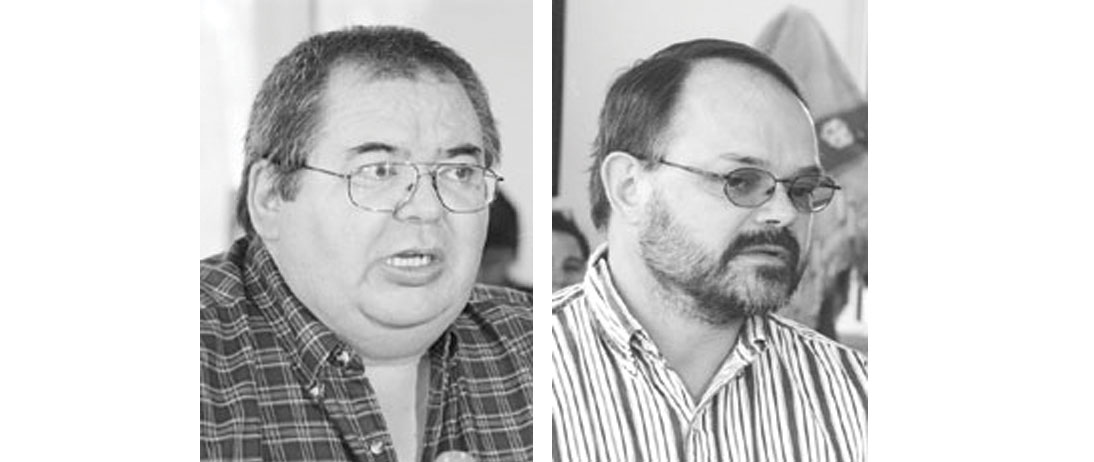
Photo by Whitehorse Star
Pictured above: BOB CHARLIE and AL MACKIE

Photo by Whitehorse Star
Pictured above: BOB CHARLIE and AL MACKIE
HAINES JUNCTION - Possibly as long as 10,000 years ago, an aboriginal person, possibly a male hunter, was crossing a glacier along a trading path, when disaster struck. Somehow, he died, and his body became trapped in the ice field.
HAINES JUNCTION - Possibly as long as 10,000 years ago, an aboriginal person, possibly a male hunter, was crossing a glacier along a trading path, when disaster struck. Somehow, he died, and his body became trapped in the ice field.
On Aug. 14, three school teachers, hunting for sheep in a remote corner of northwestern B.C., found the remains of the body. They also discovered some of his tools, what appears to be a walking stick, and some weapons, including a rare atlaltl. Their find is exciting both to archeologists and to the aboriginal people whose territory the body was found in.
“The elders have indicated that we should use this situation, what appears to be an ancient tragedy, to learn more about this person; when he lived, and how his clothes and tools were made and how he died,” Bob Charlie, chief of the Champagne-Aishihik First Nation, told a news conference Tuesday.
Charlie was reading a statement prepared for the press conference, which took place at the first nation’s offices here.
“This person will have much to tell us, to help us understand our past, and the history of our homeland,” said Charlie.
The first nation has named the person Kwaday Dan Sinchi, meaning Long Ago Person Found, in its Southern Tutchone language.
Al Mackie, an archeologist with the B.C. government, was hesitant to discuss the possible age of the findings with reporters.
“It’s so hard to pin down, I don’t want to speculate. It won’t be older than 10,000 years old, I think that can be said with certainty—not even with certainty, actually; it is even possible (that it is older, but it’s unlikely though.”
Because they only finished recovering things from the site on Monday, scientists haven’t yet had a chance to examine the findings to date them. Nor are they certain what technology they will use to examine the artifacts and the remains.
Mackie thinks they’ll likely use radio-carbon dating, a technology that requires only a small sample of an artifact to determine its age, by comparing the stable and unstable carbon in the sample.
He explained that by using this method, scientists can generally pin-point an artifact’s age within 100 years.
Radio-carbon dating may not be the only technology to be used, however.
Diane Strand, the first nation’s heritage resource officer, said she discussed DNA sampling with elders, and they gave permission for it to be used.
“They were not opposed (to DNA sampling) at all. Not at all. One of the things we had discussed was the reburial of the remains, and we had asked the question ‘What do we do with this person’s remains?’
“And they had said, ‘They have to be buried, him or her. We have to give them the dignity that this person deserves. We don’t leave a person out there.’
“I had said to them, ‘Do we do this right away?’ And they said, ‘Well, we have to know who it is. You can’t just bury somebody without knowing who it is.’ ”
Charlie said a group of his people are excited by the possibility they may even be able to trace the hunter’s descendents through DNA technology.
Whitehorse Star Reporter Nadine Pedersen
In order to encourage thoughtful and responsible discussion, website comments will not be visible until a moderator approves them. Please add comments judiciously and refrain from maligning any individual or institution. Read about our user comment and privacy policies.
Your name and email address are required before your comment is posted. Otherwise, your comment will not be posted.
Be the first to comment